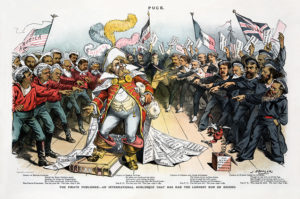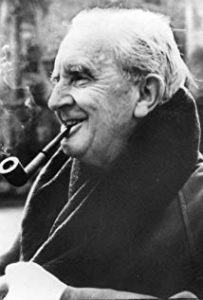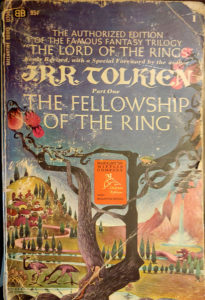
A copyright pirate, 1900. While European countries opposed piracy at the time, US policy did not actually discourage international copyright piracy until the copyright act of 1976, when the US joined the Berne convention.
The right of authors, artists and musicians to control who uses and profits from their work has been a source of controversy since the invention of the printing press.
Today, an international treaty exists to protect these rights, but copyright is usually based in national laws, and these may differ somewhat from country to country. For example, the duration of copyright protection is longer in the US than most other countries, while the “moral rights” of authors and artists tend to get more respect under European laws.
What is copyright?
The US patent and copyright system was established by the Constitution in 1787. In Section 8.8, the Constitution says Congress shall have the power:
… To promote the Progress of Science and useful Arts, by securing for limited Times to Authors and Inventors the exclusive Right to their respective Writings and Discoveries;
All work becomes technically copyrighted under US law when it is fixed in some medium. Once an idea is written down (or recorded in some way) it is yours. Registration is something you may do to ensure protection, but so long as you can prove the idea was original to you, registration is only necessary for commercial projects.
Generally, authors, artists and musicians rely on copyright law, while businesses protect their logos and symbols through trademark and inventors rely on patent law. All of these are considered intellectual property.
Copyright is regulated by the Library of Congress Copyright Office. Patents and trademarks are regulated by the US Patent and Trademark Office.
What’s the difference between copyright, trademarks and patents?:
All three are “intellectual property,” and a business might use all three at some point.
Here’s an example from the US Patent and Trademark office: Imagine you invent a new type of vacuum cleaner. You might apply for a patent to protect the invention itself. You could apply to register a trademark to protect the brand name of the vacuum cleaner once its being sold on the market. And you might register a copyright for the TV commercial you use to market the product. Those are three different types of protection for three separate types of intellectual property: brands, inventions, and artistic works.
Copyright duration
Patent — Inventions — Patents last 28 years. The expiration of patent protections is why we have “generic” as opposed to brand-name drugs.
Trademark — Brands — Registration usually lasts indefinitely. Trademark rules are enforced under the Lanham Act, which prevents infringement and false advertising.
Copyright Creative works – Registration is from 70 to 120 years, depending on the circumstances, according to the US Copyright Office.
- Individual works copyrighted after 1978 are protected for the life of the author plus 70 years.
- Works for hire, that is, creations copyrighted by corporations, are protected 120 years from date of creation or 95 years from publication, whichever is shorter.A “work for hire” is when an employee creates copyrightable art, literature, music or other creative work and, under contract, assigns that work to the employer. Without a contract, the law assumes that the work belongs to the original creator.
- Works copyrighted before 1978 have a protection of 95 years. This means that works created before 1930 are in the public domain in 2025 and may be freely used for any purpose. Works created before 1931 are in the public domain in 2026. And so on.
- Fun Fact: Duke University hosts the Center for the Study of the Public Domain, a kind of retirement home for works whose copyright has expired.
The limits of copyright
Public domain works are those that have fallen out of copyright over time or have never been copyrighted. They are free for anyone to use. Anything created before 1930 (or, 95 years ago, this being written in 2025) is in the public domain. All government documents, texts of laws, photos and images produced by the US (for example. NASA or the EPA) are in the public domain from the beginning. All state and federal legal codes in the US are in the public domain.* In the UK, all government documents fall under an open government license.
Creative Commons License or other open source licensing arrangements mean that an author is giving others permission to share and build on an otherwise copyrighted work. In many cases, this will mean that a work is available for non-profit uses with attribution.
Fair use (US) — Students, authors, pundits, educators and others are free to cite portions of a work under copyright for the purposes of discussion, debate or education so long as there is no commercial value in using portions of the works. Just how small a portion, and how little commercial value is still being worked out. Over the years, the “fair use” concept under Title 17 Section 107 has eroded to some extent, but the four part test of fair use is described in the Copyright statute and also in court cases. The test involves:
- the purpose and character of the use, including whether the use is commercial or for nonprofit educational purposes;
- nature of material itself
- percentage used in relation to the work as a whole; and
- effect on the market for or value of the original works
Fair dealing (UK & Commonwealth nations) — Very similar to “fair use” in the US, but spelled out in more detail in the law. Includes news reporting, research, criticism, and parody.
Right to Quote (Europe) — Copyright law allows short excerpts from written works
Copyright history and background
Licensing of book printing began in Britain 1534 when the Stationers’ Company was given a printing monopoly and the power to enforce actions against what was then unlawful competition.
In 1710, first Copyright Act (called the Statute of Anne) introduced two new concepts – 1) the author was the owner of copyright and 2) A fixed term of protection for published works. It was originally 14 years, renewable for another 14 years.
The US Constitution of 1787 contained the power to grant copyrights and patents in Section 8, Clause 8. While the US Constitution protected American works, it did not protect works registered in other nations. Similarly, works published in Britain by American writers, or in France by German writers, were also unprotected from exploitation in other countries.
Copyright controversy
Immanuel Kant was one of the first to speak out against the “Injustice of Counterfeiting Books” in 1798. Charles Dickens, the 19th century author of Christmas Carol and Tale of Two Cities, was outraged by the imitations and outright thefts of his work that appeared in print in America. Dickens and other authors demanded an international copyright treaty in the 1850s and 60s. Also influential was Victor Hugo, author of Les Miserables and the Hunchback of Notre Dame, who helped organize an international association to protect copyright.
Charles Dickens was not happy about copyright scofflaws, especially the Americans, who assumed that they should be able to absorb culture from Europe without a “tax on knowledge.” He said:
“You take the uncompleted books of living authors, fresh from their hands, wet from the press, cut, hack, and carve them … Now, show me the distinction between such pilfering as this, and picking a man’s pocket in the street.” — Charles Dickens in “Nicholas Nickleby”
Dickens’ complaints were heard in Britain. In 1875, a Royal Commission on British copyright law advised a copyright treaty with the US to provide reciprocal protection of British and US authors.
Meanwhile, European nations in 1886 formed an international copyright treaty, the Berne Convention for the Protection of Literary and Artistic Works, also called the International Copyright Act.

Mark Twain
Mark Twain (Samuel Clemens) thought copyright protection didn’t last long enough. In 1906 he testified before a Congressional committee that he thought copyright should last not 28 years, but forever:
I am aware, that copyright must have a term, must have a limit, because that is required by the Constitution of the United States, which sets aside the earlier constitution, which we call the Decalogue. The Decalogue says that you shall not take away from any man his property. I do not like to use the harsher term, “Thou shalt not steal.” But the laws of England and America do take away property from the owner. They select out the people who create the literature of the land. Always talk handsomely about the literature of the land. Always say what a fine, a great monumental thing a great literature is. In the midst of their enthusiasm they turn around and do what they can to crush it, discourage it, and put it out of existence. I know that we must have that limit. But forty-two years is too much of a limit. I do not know why there should be a limit at all. I am quite unable to guess why there should be a limit to the possession of the product of a man’s labor. There is no limit to real estate. As Doctor Hale has just suggested, you might just as well, after you had discovered a coal mine and worked it twenty-eight years, have the Government step in and take it away–under what pretext!
Other Americans had a very different attitude about copyright.
Woody Guthrie, the famous folk song singer of the 1930s – 50s, said:
This song is Copyrighted in U.S., under Seal of Copyright #154085, for a period of 28 years, and anybody caught singin’ it without our permission will be mighty good friends of ours, cause we don’t give a darn. Publish it. Write it. Sing it. Swing to it. Yodel it. We wrote it, that’s all we wanted to do.
Guthrie’s songs were first copyrighted in 1945 and, some argue, not renewed. Meanwhile, music copyright company Ludlow Music and the Woody Guthrie Foundation established a copyright to Guthrie’s songs in the mid-1950s.
One song in particular — This Land is Your Land — has been a point of contention. The song was copyrighted in 1945 and the copyright was not renewed, so, some argue, it should be in the public domain. But the song was also copyrighted separately in 1955 by Ludlow, at a time when Guthrie was a vagrant and headed for psychiatric confinement. In 2004, Ludlow challenged a “Jib-Jab” satire / parody of the 2004 election. The song is both parody and satire; while direct parody of a song is protected, satire may not be. Ludlow and the Guthrie foundation decided not to pursue the lawsuit. More recently, a New York law firm Wolf Haldenstein Adler Freeman & Herz, challenged the copyright status of “This Land,” saying it belongs in the public domain. (New York Times, June 17, 2016).
International Copyright issues 20th century
Some authors and publishers had problems with the difference in copyright laws between the US and Europe during most of the 20th century. Most of Europe had adopted the Berne copyright Convention as early as 1887 while the US fell back on the much weaker Universal Copyright Convention of 1952.

 J.R.R. Tolkien’s books, including The Hobbit (first published in 1937) and The Lord of the Rings (first published in 1954-55) were at the center of the 1960s controversy over US law and international copyright. Ace Books, a pulp paperback publisher, had approached Tolkien over rights for a paperback in the US. Tolkien turned them down flat, mostly because he had a kind of scholarly disdain for paperbacks (as opposed to hardbacks), according to a Library of Congress article on the copyright fight. At this time, only about 2,000 copies of a book printed in another country could be imported into the US before it fell into the public domain. “Most laws on the books existed to protect domestic creations from foreign ones,” wrote Andrew Liptak in a Kirkus Reviews article. “As the (Tolkien) trilogy became incredibly popular, Houghton Mifflin was technically in violation of the law when they exceeded their import limits and failed to renew their interim copyright.”
J.R.R. Tolkien’s books, including The Hobbit (first published in 1937) and The Lord of the Rings (first published in 1954-55) were at the center of the 1960s controversy over US law and international copyright. Ace Books, a pulp paperback publisher, had approached Tolkien over rights for a paperback in the US. Tolkien turned them down flat, mostly because he had a kind of scholarly disdain for paperbacks (as opposed to hardbacks), according to a Library of Congress article on the copyright fight. At this time, only about 2,000 copies of a book printed in another country could be imported into the US before it fell into the public domain. “Most laws on the books existed to protect domestic creations from foreign ones,” wrote Andrew Liptak in a Kirkus Reviews article. “As the (Tolkien) trilogy became incredibly popular, Houghton Mifflin was technically in violation of the law when they exceeded their import limits and failed to renew their interim copyright.”
In 1965, Ace Books went ahead with an edition of the Hobbit and Lord of the Rings. Tolkien and his publishers vigorously protested, but when the legal options ran out, US publisher Houghton Mifflin printed paperback editions of Tolkien’s books in 1973 and included this plea on the back cover:
“This paperback edition and no other has been published with my consent and cooperation. Those who approve of courtesy (at least) to living authors will purchase it and no other.”
The incidents went without much comment, even in the world of professional publishing, but provided an example of the convoluted US approach to copyright. Finally, in 1976, the US opened the door to international cooperation on copyright. But it was not until 1989 that the US formally ratified the Berne Convention.
(Also see: Herbert Mitgang, “Publishing: A New Atlantic Alliance,” New York Times, Mar 25, 1977; ProQuest Historical Newspapers: The New York Times pg. 72; and “In and Out of Books” by Lewis Nichols, New York Times Aug 8, 1965; ProQuest Historical Newspapers: The New York Times pg. BR8.)
For more about the history of copyright, see:
- Benjamin W. Rudd, Notable Dates in American Copyright, Library of Congress (pdf).
- A History of Copyright in the United States, Association of Research Libraries.
- CSPAN video of Robert Spoo talking about his book “Without Copyrights.”
- Paper by Robert Brauneis, “A brief illustrated chronicle of retroactive copyright term extension,” Social Science Network, May 27, 2015.
- “This land belongs to all of us,” by Peter Irvine & Kohel Haver
